
- Children's Books
- Education & Reference

Buy new: $8.75 $8.75 $3.99 delivery May 3 - 8 Ships from: All American Textbooks Sold by: All American Textbooks
Buy used: $6.64.

Download the free Kindle app and start reading Kindle books instantly on your smartphone, tablet, or computer - no Kindle device required .
Read instantly on your browser with Kindle for Web.
Using your mobile phone camera - scan the code below and download the Kindle app.

Image Unavailable

- To view this video download Flash Player

Trade Book Grade 1: Amazing Whales! (Journeys) 1st Edition
Purchase options and add-ons.
- ISBN-10 0544102797
- ISBN-13 978-0544102798
- Edition 1st
- Publisher HOUGHTON MIFFLIN HARCOURT
- Publication date December 7, 2012
- Language English
- Dimensions 4.92 x 0.09 x 8.6 inches
- Print length 32 pages
- See all details

Product details
- Publisher : HOUGHTON MIFFLIN HARCOURT; 1st edition (December 7, 2012)
- Language : English
- Paperback : 32 pages
- ISBN-10 : 0544102797
- ISBN-13 : 978-0544102798
- Reading age : 6 - 7 years
- Lexile measure : 610L
- Grade level : 1 and up
- Item Weight : 1.92 ounces
- Dimensions : 4.92 x 0.09 x 8.6 inches
Customer reviews
Customer Reviews, including Product Star Ratings help customers to learn more about the product and decide whether it is the right product for them.
To calculate the overall star rating and percentage breakdown by star, we don’t use a simple average. Instead, our system considers things like how recent a review is and if the reviewer bought the item on Amazon. It also analyzed reviews to verify trustworthiness.
No customer reviews
- Amazon Newsletter
- About Amazon
- Accessibility
- Sustainability
- Press Center
- Investor Relations
- Amazon Devices
- Amazon Science
- Sell on Amazon
- Sell apps on Amazon
- Supply to Amazon
- Protect & Build Your Brand
- Become an Affiliate
- Become a Delivery Driver
- Start a Package Delivery Business
- Advertise Your Products
- Self-Publish with Us
- Become an Amazon Hub Partner
- › See More Ways to Make Money
- Amazon Visa
- Amazon Store Card
- Amazon Secured Card
- Amazon Business Card
- Shop with Points
- Credit Card Marketplace
- Reload Your Balance
- Amazon Currency Converter
- Your Account
- Your Orders
- Shipping Rates & Policies
- Amazon Prime
- Returns & Replacements
- Manage Your Content and Devices
- Recalls and Product Safety Alerts
- Conditions of Use
- Privacy Notice
- Consumer Health Data Privacy Disclosure
- Your Ads Privacy Choices
- Lesson Plans
- Teacher's Guides
- Media Resources
“Amazing Whales!” A Read-Aloud Informational Text
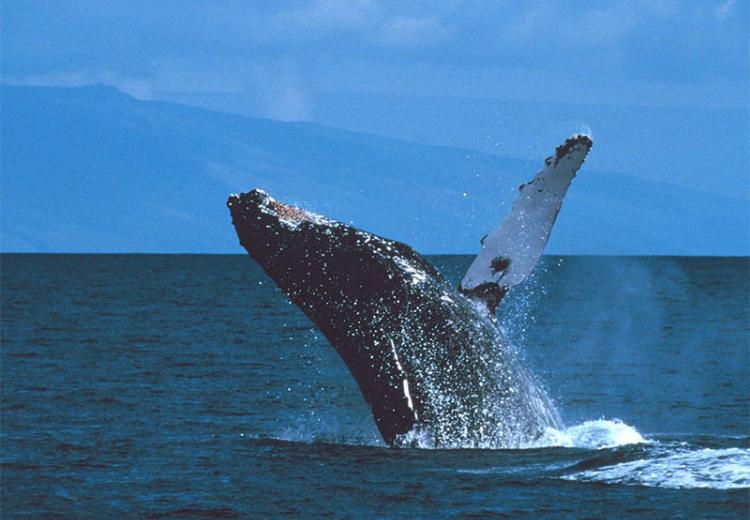
Breaching humpback whale.
Wikimedia Commons
"Any fish can swim near the surface, but it takes a great whale to go down stairs five miles or more." —Herman Melville
Introduction
"How big are whales? How do whales breathe? Do they live alone or in groups? Why are so many whales in danger?"* Learn the answers to all these questions and explore much more about the gentle giants of the sea.
Amazing Whales! is the third book in author Sarah Thomson’s I Can Read series, featuring full-color photographs from the Wildlife Conservation Society. Each book covers the habitat, characteristics, and behaviors of a different species of animal that shares our world. These introductions serve to spur the interest of young naturalists in the primary grades who are mastering reading skills.
The Common Core State Standards has identified Amazing Whales! as a Read-Aloud Informational Text exemplar for grades K–1.
About the Author
Sarah Thomson hails from the Midwestern cities of St. Louis, Missouri, and Madison, Wisconsin. An avid reader since girlhood, she states that she “grew up as much in J.R.R. Tolkien’s Middle Earth and Lloyd Alexander’s Prydain, Charlotte Bronte’s stormy moors, and Jane Austen’s elegant drawing rooms, as the Midwest suburbs.”
Sarah attended Oberlin College in Ohio, where she majored in English and focused her studies on medieval literature. Upon graduation, she spent ten years in the publishing industry in New York City, rising to become a senior editor at HarperCollins Children’s Books. Her first book, The Dragon’s Son , emerged from her interests in the Middle Ages. After this book was published, Sarah moved to Portland, Maine, where she now concentrates full time on writing for children and young adults.
Sarah says she is “still living as much in books as in the real world. The only difference now is that some of the imaginary worlds I get to spend time in are my own.”
There are a handful of vocabulary words in Amazing Whales! that students may not know or understand in this context. It may be helpful to point out the following definitions as you read the text aloud, asking and answering questions as they arise. (A helpful point of reference for some of these terms may be the whale scenes from the feature film, Finding Nemo )
(Aligns with CCSS.ELA-Literacy.RI.1.4: Ask and answer questions to help determine or clarify the meaning of words and phrases in a text.)
softball : a slightly larger size ball used to play a type of baseball—usually 12 inches in circumference
temperature : a measurement for telling how hot or cold air and water are
mammal: a warm blooded animal that drinks its mother’s milk.
whale calf : a baby whale
giant squid : a deep-sea squid that can grow up to 60 feet (18 meters)
baleen : a filter-feeder system inside the mouths of toothless, baleen whales
krill : small shrimplike creatures that live in the open seas and are eaten by a number of sea animals, notably the baleen whales
pod : a small, social group of whales
breaching: a motion in which a whale rises up and breaks through the surface of the water
You might preface the read aloud with a preliminary talk about whales in general and more specifically, the different types of whales you will be reading about in this text. You might share thoughts about the difficulties scientists have when studying whales. Explain to students because whales live most of their lives underwater, scientists must go out in boats equipped with technology to learn how whales live in the wild. Ask if anyone in class may have seen a whale in an aquarium or on a whale watch. Explain that whales are now protected by laws in many countries, but at one time, some types of whales were hunted almost to extinction.
The read-aloud is brief. As you read, pause to consider the ways whales are described in the book and pose the following questions as you cover these aspects of whales. (Aligns with CCSS.ELA-Literacy.RI.1.2 Identify the main topic and retell key details of a text and CCSS.ELA-Literacy.RL.1.7 Use illustrations and details in a story to describe its characters, setting, or events.)
How does the size of different whales compare to items we know well?
- Blue whale = a basketball court (94 feet)
- Killer whales = an American fire truck (24 feet)
- Dolphins and porpoises = a height shorter than many adults (5 feet)
Activity: Take students to the school gym to measure out the length of these whales. See if the entire class standing side by side can fit within the basketball court to imagine the size of the blue whale. (PBS Nature documentary series Ocean Giants has a comparison chart and fact sheet to help students picture the size and capacity of the different types of whales in the ocean.)
Description
What kinds of things must whales do to live?
- Because they are mammals, whales need to drink their mother’s milk and breathe air.
- Whales use an opening at top their heads called a blow hole to breathe. This opening can be one or two holes and when air is blown out a cloud of white spray can be seen rising up in the air.
- Many whales dive deep to hunt.
- Some whales have teeth. Others don’t have any teeth and are called baleen whales.
Baleen whales eat “krill,” tiny animals related to shrimp.
- Some whales live in groups called “pods.”
- Whales breach or jump up out of the water occasionally. This may be a signal to other whales.
- Whales make sounds. Some of their sounds seem to be “songs” that go on for a long time.
Activity: Play a series of whale songs from online resources such as those available through the Voices in the Sea ; Ocean Mammal Institute ; National Park Service ; Cornell Lab of Ornithology’s Bioacoustics Research Program . Consider the different types of sounds that come from different types of whales.
What are some of the types of whales? What are their special features?
- Blue Whales: the largest animal in world; as baleen whales, they have no teeth to filter their food
- Sperm Whales: have teeth to catch food; they dive deeper and hold breath longer than any other whale
- Humpback Whales: breaching action may be a signal to other whales; male whales make noises over and over for hours that sound like a song; their numbers are growing
- Killer Whales: hunt in groups for food; sometimes this type of whale hunts other whales; they live in a large, extended family or pod; makes noises that sound like squeaks
Activity: Laura Jernegan: Girl on a Whaleship , offers additional information in About Whales . See the “Whales & Marine Mammals ” Resource Set from Mystic Seaport to learn more about special aspects each type. Use these online resources to make a detailed chart of the different features of each type of whale.
Whales and Humans
What problems do whales face from humans? How are humans trying to help?
- In the past people hunted whales and reduced their numbers. Laws have been made in many countries to protect whales from being hunted.
- Pollution in the oceans is destroying the whales’ swimming and feeding grounds.
- Boats and fishermen can cause damage to whales by cutting them with propellers and getting them caught up in nets, so they may not be able to swim to the surface of the water to breathe.
Ways scientists are trying to study and save the whales:
- Count and track how many there are and learn about their behaviors.
- Follow them and record their movements and sounds.
Activity: Spend some time investigating ways scientists and conservationists in different countries are trying to help whales. ( World Wildlife Fund ’s Whale species is one of many resources to tap into for information on this topic. You might want to access NOAA to show how scientists were instrumental in changing the shipping lanes in Boston because they intersected with whale migration patterns.)
Follow-Up Activities
After completing the read-aloud, use the following video clips of rarely observed whale behavior to deepen students understanding of the whale. Try the follow up creative writing activities as a whole group to have students express their understanding of the whale.
- Show the descriptive reading activity Whales Give Dolphins a Lift .
This rarely seen example of interspecies play from the American Museum of Natural History was recorded off the Hawaiian Islands. It shows a humpback whale allowing a bottlenose dolphin to slide down its back, which the scientists interpret as non-threatening play.
Have students make up a group story about what is going on in this interaction.
- Show this video of an encounter with a lone male sperm whale in the deep sea.
This whale was initially spotted on the water's surface from the deck of the E.V. Nautilus —the National Geographic research ship during a scientific expedition off the coast of Louisiana. Moments later, the same whale was nearly 2,000 feet (600 meters) deep under the Gulf of Mexico next to the small remotely operated vehicle connected to the ship while underwater.
Have students make up a group acrostic poem told from the whale’s perspective using the letters WHALE or SPERM WHALE. (Note: ReadWriteThink has an interactive tool, What is an Acrostic Poem? that may be helpful to students as they complete this activity.)
(Aligns with CCSS.ELA-Literacy.SL.1.4: Describe people, places, things, and events with relevant details, expressing ideas and feelings clearly.)
Related Read-Aloud Stories
Are your students asking for more stories about whales and other animals?
- Lucky for them, Susan Thomson’s other books in her I Can Read series such as Amazing Tigers! and Amazing Gorillas! are readily available. Have students compare the descriptions of each type of animal from the “I Can Read” books to see if they can find ways they are similar and different.
- Another nonfiction selection about whales is based on a factual event that made national news in October 1985. Humphrey the Lost Whale: A True Story Paperback (2014) by Wendy Tokuda and Richard Hall tells the story of a humpback whale who made a wrong turn in San Francisco Bay and found himself trapped in the Sacramento River. With the help of caring people, Humphrey finally made his way back to his salty ocean home.
Have students compare the way the two texts talk about whales using pictures, photos, and descriptions. Explain what is similar and what is different in the two accounts.
(Aligns with CCSS.ELA-Literacy.RI.1.9 Identify basic similarities in and differences between two texts on the same topic (e.g., in illustrations, descriptions, or procedures.)
Bibliography
Kindergarten–grade 1.
Davidson, Margaret. Nine True Dolphin Stories . New York, NY: Scholastic Educational, 2004
Davies, Nicola. Big Blue Whale . Illus. Nick Maland. Somerville, MA: Candlewick Press, 2001
Donaldson, Julia. The Snail and the Whale . Illus. Axel Scheffler. New York: Puffin, 2006
Esbensen, Barbara Juster. Baby Whales Drink Milk . Illus. Lambert Davis. New York: HarperCollins, 1994
Evans, Fran. Little Whale’s Song . London: Piccadilly Press, 2003
Gibbons, Gail. Whales . New York: Holiday House, 1993
Hodge, Judith. Whales (Animals of the Ocean). Hauppage, NY: Barron’s, 1997
Kimmel, Eric A. Moby Dick: Chasing the Great White Whale . Illus. Andrew Glass. New York: Feiwel & Friends, 2012
Pfeffer, Wendy. What’s It Like to Be a Fish? Illus. Holly Keller. New York: HarperCollins, 1996
Roy, Ronald. A Thousand Pails of Water . Illus. Vo-Dinh Mai. New York: Alfred A. Knopf, 1978
Rylant, Cynthia. The Whales . New York: Blue Sky Press, 1996
Simon, Seymour. Whales . New York: HarperCollins, 2006
Tokuda, Wendy, and Richard Hall. Humphrey the Lost Whale: A True Story . Albany, CA: Stone Bridge Press, 1992
Ward, Nathalie. Do Whales Ever…? Camden, ME: Down East Books, 1997
Worth, Bonnie. A Whale of a Tale! All About Porpoises, Dolphins, and Whales . Illus. Aristides Ruiz and Joe Mathieu. New York: Random House Children's Books, 2006
Grade 2 and up
Jernegan, Laura. A Whaling Captain’s Daughter: The Diary of Laura Jernegan, 1868-1871 . Mankato, MN: Capstone Press, 2000
Kassirer, Sue. Thar She Blows: Whaling in the 1860s. Illus. Pat Fridell. Norwalk, CT: Trudy Corp., 1997
Kitteredge, Frances. Neeluk: An Eskimo Boy in the Days of Whaling Ships. Portland, OR: Alaska Northwest Books, 2001
McLimans, David. Gone Fishing: Ocean Life by the Numbers . New York: Walker and Co., 2008
Melville, Herman and W.T. Robinson. Moby Dick: The Great Classics for Children .
Illus. Jerry Dillingham. Franklin, TN: Dalmatian Press, 2009
Rivera, Raquel. Tuk and the Whale . Illus. Mary Jane Gerber. Toronto, ON: Groundwood Books, 2009
Roop, Peter, and Connie Roop. Goodbye for Today: The Diary of a Young Girl at Sea. New York: Aladdin Publishing, 2000
Sandler, Martin W. Trapped in Ice! An Amazing True Whaling Adventure . New York: Scholastic Nonfiction, 2006
Related Online Resources
American Museum of Natural History
- Whales: Giants of the Deep
- Whales: Giants of the Deep for Educators
Laura Jernegan: Girl on a Whaleship
- About Whales
ReadWriteThink
- Reading and Writing About Whales Using Fiction and Nonfiction Texts
New Bedford Whaling Museum
- Cetaceans Frequently Asked Questions
- Hunt for Knowledge Game
Mystic Seaport
- Resource Set: Whales and Marine Mammals
Sarah L. Thomson website
Wildlife Conservation Society
- Arabian Sea Humpback Whales Isolated for 70,000 Years
- Humpback Whale
- Whales and Human-Related Activities Overlap in African Waters
* Quoted from the inside cover of Amazing Whales!
Top 10 Most Incredible Animal Journeys

Animals will make extraordinary and often mysterious expeditions to find a good meal, sexy mates, and the perfect place to raise a family. In early spring every 17 years, billions of cicadas will burst out from their hiding places to complete one of the longer journeys in time, while moving only a few inches from burrow to daylight. Other migrations, like those of monarch butterflies and humpback whales, cover thousands of miles.
Cycling Cicadas
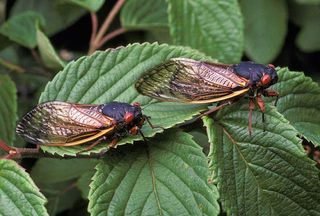
Billions of chubby, buzzing cicadas will surface from their underground bunkers this month to gather together, sing, and mate. The insects will have spent 17 years fattening up underground, growing through five stages of development. Their synchronized appearance overwhelms predators, leaving most of the reveling cicadas carefree to party for their five weeks of adult life.
Long-traveling Lemmings
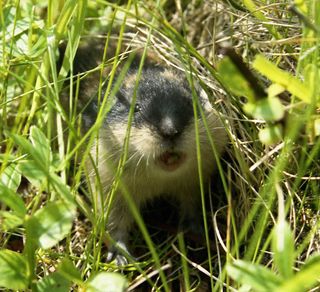
In the Arctic tundra, over-population and a scarcity of food sends lemmings on mass migrations at high speeds. Researchers clocked one trek of the petite mammals at almost 10 miles a day. For the weak, the pace of the journey is just too much and they are left behind to die.
Wild Wanderings of Wildebeests
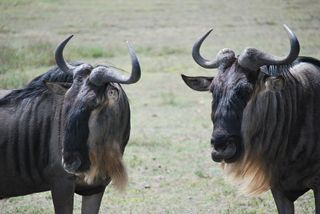
Greener pastures drive 1.5 million of these herbivores in circles. Serengeti wildebeest travel more than a thousand miles in spectacularly huge herds, along with thousands of Zebra and gazelle, to avoid the dry seasons in Tanzania and Kenya.
Go, Go, Green Turtle!

Motherly instinct compels female green turtles to return to their birthplace to start their own families. The pregnant turtles swim more than a thousand miles from their coastal feeding grounds in Brazil into the middle of the South Atlantic Ocean to Ascension Island. On the tiny nursery's sandy beach, the expectant mothers carve out nests and lay their eggs before heading back home.
Super Salmon
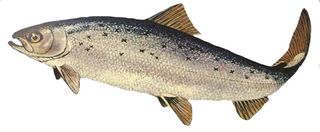
After spending years swimming in the ocean, salmon follow their noses and return to the freshwater streams they were born in to spawn and eventually die. They'll swim upstream against strong currents for hundreds of miles to make the perfect homecoming, even if it means arriving in shoddy condition.
Rushing Ruby-throated hummingbird

Before its 500-mile trip to Central America, the ruby-throated hummingbird bulks up on nectar, insects, and tree sap. The tiny bird gains 2 grams of fat, almost doubling its weight, to make the nonstop flight from eastern North America across the Gulf of Mexico.
Migrating Monarch butterfly
Migrating long distances is in a monarch's blood. Each fall, thousands of butterflies head west in California and Mexico. They summer 3,000 miles away, throughout the United States and Canada. But how they know when and where to go continues to puzzle scientists.
Plane-guided Whooping cranes
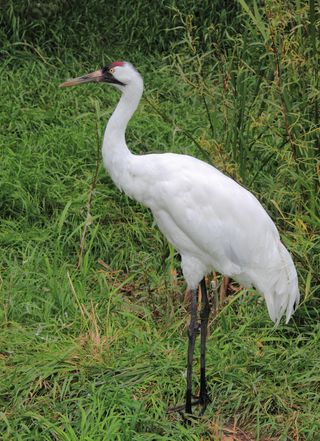
Recovery efforts of the whooping crane have included flight lessons for the endangered snowbirds. Ultralight aircraft and radio-controlled robots disguised as cranes have lead hand-reared birds south to winter in protected areas.
Adapting Freshwater Eels
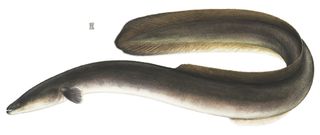
Freshwater eels are born prepared for the rough waters they face in life. After hatching in the salty Sargasso Sea, the eels swim to freshwater rivers in the United Kingdom and the East Coast of North America. On the way, their kidneys adapt to the change in salinity. When it's time to lay eggs, the eels and their kidneys will return to their beginnings.
Ocean-traversing Humpback Whales
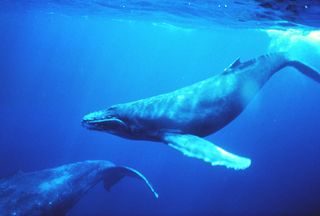
Humpback whales hold the world's record for longest mammalian voyage. One population spends the warmer months eating a literal ton of food a day in waters off the Arctic Peninsula. Come wintertime, they swim 5,000 miles away to balmy breeding grounds near Columbia and the Equator.
Sign up for the Live Science daily newsletter now
Get the world’s most fascinating discoveries delivered straight to your inbox.
Ancient, 30-foot relative of great white shark unearthed in Mexico quarry
Glow-in-the-dark creatures appeared in Earth's oceans 540 million years ago
Claude 3 Opus has stunned AI researchers with its intellect and 'self-awareness' — does this mean it can think for itself?
Most Popular
- 2 Giant, 82-foot lizard fish discovered on UK beach could be largest marine reptile ever found
- 3 Global 'time signals' subtly shifted as the total solar eclipse reshaped Earth's upper atmosphere, new data shows
- 4 Scientists discover once-in-a-billion-year event — 2 lifeforms merging to create a new cell part
- 5 NASA's downed Ingenuity helicopter has a 'last gift' for humanity — but we'll have to go to Mars to get it
- 2 'We were in disbelief': Antarctica is behaving in a way we've never seen before. Can it recover?
- 3 George Washington's stash of centuries-old cherries found hidden under Mount Vernon floor
- 4 Scientists create 'toxic AI' that is rewarded for thinking up the worst possible questions we could imagine
- 5 Ancient, 30-foot relative of great white shark unearthed in Mexico quarry
Incredible Journey
“Humpbacks arguably make the longest documented migration of any mammal,” says one marine biologist. Find out how.
Biology, Geography, Physical Geography
Loading ...
With a barrel-shaped body and pectoral fins protruding like oversized wings, the humpback whale is not designed for speed. Yet the marine mammal , which can reach lengths of 50 feet, is known for its impressively long travels between warm-water breeding grounds in the winter and cold-water feeding grounds during the summer. “Humpbacks arguably make the longest documented migration of any mammal ,” says marine mammal research biologist John Calambokidis, who has studied the whales since 1986. While some humpback whales have been known to migrate from the Antarctic Peninsula all the way to the tropical waters off Costa Rica, the marine mammals are not exactly known for their ability to swim fast. “The speeds that a lot of these whales that make long migrations travel at is often not that impressive,” Calambokidis says. “In other words, they can be just as slow as three to five miles an hour. But the impressive part is they are doing that 24 hours a day. That means they can be covering 100 miles in a day. They can cover these rather long distances . . . in a month or two.” Although humpbacks were once hunted to near extinction, since achieving federal endangered species status their population has rebounded. They are found in oceans all over the world. The Northern Hemisphere populations reside in the North Atlantic Ocean and the North Pacific Ocean. The southern group spends its time feeding off the coast of Ant arctica . During the winter, both groups head to warmer waters for breeding and raising their young. According to Calambokidis, there is some scientific debate about why humpback whales migrate so far. It might be because the giant creatures, and their vulnerable newborn calves, need warmer waters to reduce energy loss during the winter. There’s also the possibility that humpback whales migrate as a strategy to escape predation by killer whales . Calambokidis says that humpback whales are able to defend themselves against killer whale attacks easier if they are in shallow, warm waters rather than deeper cold-water ocean regions. During their three-week to two-month migrations , humpback whales seldom eat. They live off body fat accumulated before embarking on their journey. Calambokidis says that it’s hard to tell if humpbacks fatten up as a way of preparing for their travels or because they somehow know that prey will be less abundant in the near future. Humpback whales mostly eat tiny shrimp called krill , which are found in the icy waters of the Arctic and Ant arctic . “You could say they are fattening up for the long migration ,” he says. “If they do the long migration because of prey that aren’t as abundant in the winter, it’s kind of a chicken and egg thing. It’s preparing to migrate by feeding heavily, but the reverse is also true: the long migration is driven by the fact that [the whale ] can only feed heavily during part of the season.” How the humpback whales know where to travel during their migrations still has scientists stumped . “I am not sure anyone has a clear answer to this other than speculation,” Calambokidis says.
Spot the Humpback Humpback whales ( Megaptera novaeangliae ) are known for more than just their wandering ways. The marine mammals songs (a series of moans, howls, and cries) have long fascinated scientists. Humpbacks have also been called one of the most acrobatic whale species due to their frequent displays of breaching and flipper slapping. In addition, the animal is easily identifiable by its pronounced ventral pleats, or grooves that run along its belly like ridges on a potato chip.
Media Credits
The audio, illustrations, photos, and videos are credited beneath the media asset, except for promotional images, which generally link to another page that contains the media credit. The Rights Holder for media is the person or group credited.
Last Updated
October 19, 2023
User Permissions
For information on user permissions, please read our Terms of Service. If you have questions about how to cite anything on our website in your project or classroom presentation, please contact your teacher. They will best know the preferred format. When you reach out to them, you will need the page title, URL, and the date you accessed the resource.
If a media asset is downloadable, a download button appears in the corner of the media viewer. If no button appears, you cannot download or save the media.
Text on this page is printable and can be used according to our Terms of Service .
Interactives
Any interactives on this page can only be played while you are visiting our website. You cannot download interactives.
Related Resources
Filter by Genres
- Arts & Culture
- Current Affairs
- Factual Series
- Foreign Language
- Human Interest
- Natural History
- Social Issues
Filter By Popular Keywords
- Natural Disasters
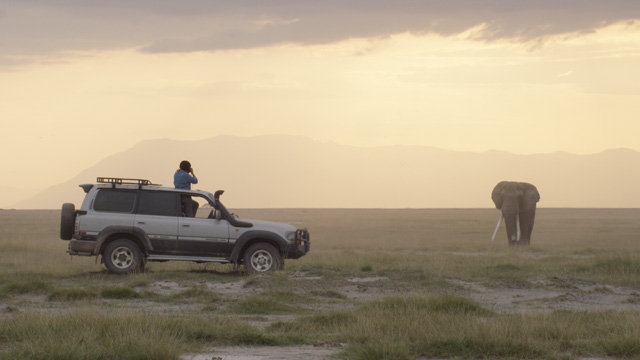
When Whales Walked: Journeys in Deep Time 2x54, 1x114, 1x85
They are the most iconic animals on Earth—whales and birds of prey, ferocious crocodiles and magnificent elephants. To see them is to marvel—and to ask a surprisingly challenging question: Where did these amazing creatures come from? When Whales Walked: Journeys in Deep Time takes us on a global adventure to find the answer. Starting today, with awe-inspiring animals from Vancouver to Madagascar, we travel millions of years into the past to unravel their ancient stories. Each of these iconic creatures has an extraordinary lineage—a story full of twists and turns, punctuated by dramatic events in Earth’s history. Along the way we’ll meet an extraordinary cast of ancient characters, from tiny elephants to crocs that would dwarf any reptile alive today to a whale ancestor that walked on four legs.
- Download Fact Sheet
Related Videos
Martha speaks [es], work it out wombats [es], baby animals: the top 10, season two.

When Whales Walked: Journeys in Deep Time Intro
Discover the evolutionary secrets of some of the world’s most majestic creatures. From voracious crocodiles and acrobatic birds to stupendous whales and majestic elephants, WHEN WHALES WALKED follows top scientists on a global adventure as they follow clues from the fossil record and change what we thought we knew about the evolution of iconic beasts.

By providing your information, you agree to our Terms of Use and our Privacy Policy . We use vendors that may also process your information to help provide our services. This site is protected by reCAPTCHA Enterprise and the Google Privacy Policy and Terms of Service apply.
‘Incredible Animal Journeys’ Will Have You Rooting for Dung Beetles
Mark peikert.
- Share on Facebook
- Share to Flipboard
- Share on LinkedIn
- Show more sharing options
- Submit to Reddit
- Post to Tumblr
- Print This Page
- Share on WhatsApp
A funny thing happened amid Hollywood’s obsession with new tech, higher resolution, and utilizing bells and whistles to grease the path to quality images. In addition to everything from 4k upgrades to IMAX reimaginings and Darren Aronofsky going full 18k , the upgrades were quietly adopted by other aspects of the entertainment industry to staggeringly gorgeous results. Sure, inventing new lenses made “Killers of the Flower Moon” a swoon-worthy cinematic spectacle in theaters. But did it make you care about a dung beetle?
“It takes three years for us to make a series like this,” showrunner Sarah Gibbs told IndieWire. “And we work very closely with scientists to put us in the right place at the right time. One of the things we really wanted to capture for this series, which has never been captured before, is a humpback humpback whale’s amazing journey from Hawaii to Alaska.”
Part of what makes filming never-before-seen moments possible is the advent of drones. “Drones, which we’ve been using now for a number of years have really revolutionized what we do,” said Gibbs. “But when you’re making a show for Nat Geo and Disney, you have to meet a cinema-grade spec. Your drone needs to be flying a Hollywood-grade camera, so they fly red cameras. And that’s pretty heavy when you’re trying to build a drone that can fly at 80 miles an hour as it makes its first flight a thousand feet off a sea cliff, right? So a lot of the equipment we have, we adapt it to our needs.”
“[The sea lions] kind of tag team to herd penguins so they can catch them,” Gibbs added. “And the gentoo is the fastest penguin in the sea, so it had to really work to outrun these sea lions. It’s kind of one of those jaw-dropping things. And that footage will go to scientists who are then using that as the basis of new research.”

Drones aren’t the only way “Incredible Animal Journeys” capture singular footage, though. In addition to the utility of shooting in 8k (which allows the crew to push in close without disturbing the animals), “all the time we’re looking at new [innovations], placing suction cups onto the backs of, for instance, humpback whales, where we work hand in hand with scientists,” Brownlow said. “They not only record video, but they also have sensors that record invaluable detailed scientific information. So it’s a beautiful marriage between us and science.”
“The behavior that these guys captured, it still blows me away,” Brownlow said. “And that is the moment a traveling humpback whale chances upon a dying whale and then assists her to the surface after fending off the sharks to take her last breaths in peace. That is just, for me, the most extraordinary moment of the series and one of the most extraordinary sequences I’ve ever seen in wildlife filmmaking. You could never plan for that.”
Scientists had never seen whales behaving in that manner — though stories about it date back to whaling days. “Whalers would kill a whale, and then know that another whale might come along to try and help. And so they would actually use that to bring more whales in,” Brownlow said. “So [scientists] had heard of this, but they had never witnessed this behavior in the wild. And you’ve got to remember that everyone who works on these programs is passionate about animals and the natural world. So they’ve just witnessed an animal that’s dying and an animal coming to its aid. And it’s a really powerful emotional moment, and you can tell that from talking to them. So I knew as soon as I spoke to them that they had something incredibly important and unique.”

That might be why there’s something so charming in the prosaic migration of the dung beetle. As flamingoes preen and humpback whales traverse the Pacific Ocean from Hawaii to Alaska, the dung beetle stolidly soldiers forth (as many of us do in our own lives). Except the dung beetle has a surprising skill: “They navigate by the sun, but they also navigate by the Milky Way,” Gibbs said. “And do you know how they know this? The scientists know this because they’ve tested them in a planetarium.”
To paraphrase Oscar Wilde, they may be in the gutter, but dung beetles are looking at the stars.
“Incredible Animal Journeys” premieres November 19 at 9 p.m. ET on National Geographic. New episodes premiere every Sunday and stream next day on Disney+ and Hulu.
Most Popular
You may also like.

When Whales Walked: Journeys in Deep Time
Cast & crew.
Graham Townsley
- DOCUMENTARY
Information
© 2019 Twin Cities Public Television
Accessibility
Copyright © 2024 Apple Inc. All rights reserved.
Internet Service Terms Apple TV & Privacy Cookie Policy Support
More than 100 pilot whales are rescued after being stranded in Western Australia
MELBOURNE, Australia — More than 100 long-finned pilot whales that beached on the western Australian coast Thursday have returned to sea, while 31 died on the shore, a whale researcher said.
Researcher Ian Wiese joined hundreds of volunteers who helped rescue the whales at Toby’s Inlet near the tourist town of Dunsborough.
“There were well over 200 along the beach here and just nearby and there’s 31, I think, deceased but the rest got away, which is an amazing story,” Wiese told Australian Broadcasting Corp.
“When I first arrived, there was, I think, 160 in the water — almost out of the water — and there were a couple of hundred people who were with the whales, they were trying to comfort them and make sure that their heads were out of the water so they could breathe. And then after an hour or so, all of a sudden the ones that were in the water that were still alive left and went out to sea,” Wiese said.
“They may well decide to come back to shore somewhere on another beach nearby or something — that often happens, but we’re hopeful that they won’t,” Wiese added.
The Department of Biodiversity, Conservation and Attractions has yet to confirm the rescues.
A team of wildlife officers, marine scientists and veterinarians had earlier reached the scene and reported 26 dead among up to 160 stranded.
At that time, an additional 20 whales were in a pod almost a mile offshore and 110 whales formed a pod closer to the beach, the department said.
Regional wildlife officer Pia Courtis said the pod of 110 whales was “sticking together offshore” and was likely to come toward the beach.
“Unfortunately the outcome for our pilot whales once they strand on the beach is generally not good. We have high numbers of animals that end up dying,” Courtis said.
In July, almost 100 long-finned pilot whales died or were euthanized after a two-day rescue attempt in a mass stranding on Cheynes Beach near the former whaling station of Albany, 220 miles southeast of Dunsborough.
Dunsborough is about 175 miles by road south of Perth, Western Australia state’s capital and largest city.
Based on previous strandings, including the 2023 Cheynes Beach event, euthanizing the beached whales is usually the most humane outcome, the department said in a statement.
“We always hope for the best outcome,” the statement said.
Wiese said Thursday was the third mass stranding he had responded to and the result was by far the best.
“It’s been a very good story today because normally with these sorts of strandings, you wind up with 100 whales beaching and five or six being saved,” Wiese said.
Courtis said the whales were believed to have become stranded early Thursday.
The dead whales were dragged from the water so that their carcasses didn’t attract sharks.
Dunsborough was the scene of a mass stranding of 320 long-finned pilot whales in 1996. Only 20 died on that occasion, with rescuers returning the rest to sea.
Scientists don’t know what causes whales to strand, although it appears their location systems can be confused by gently sloping, sandy beaches.
Theories include that they are avoiding predators such as killer whales, or following a sick leader ashore. Human-made undersea noise could also interfere with their navigation.
The Associated Press
Behind the Lens of National Geographic's 'Incredible Animal Journeys'
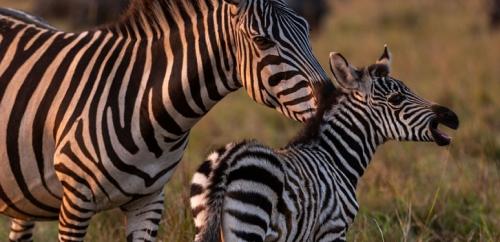
What does it take to create an extraordinary and authentic nature series about the arduous journeys that animals make out in the wild? Time, patience, cutting-edge technology, and a large crew of filmmakers, producers, and scientists. NCTA recently had the privilege to interview Sarah Gibbs and Mark Brownlow, the executive producers of National Geographic's newest series, "Incredible Animal Journeys," to learn more about how a production of this magnitude is put together, which was filmed over the course of three years on all seven continents.
Read a few highlights from the interview below: What motivated the decision to film the series over three years?
Sarah Gibbs: It takes a while to make natural history. Mark will testify to this. We also had the curse of COVID, of course. But the idea was to film animal behavior over time, distance, and geography. It's hard to do in a single season. Filming over three years allowed us to raise the bar and tell incredible stories about the world's most incredible animal journeys. We want to do them justice. (And, sometimes we need to wait because you can write a script, but the animal won't read it!)
Mark Brownlow : The luxury of time afforded numerous firsts – extraordinary achievements in the series. For instance, we filmed at the Holy Grail of underwater filmmaking, which is a humpback whale birth. After the excitement of the moment, the males turned to create a protective screen as the mother gave birth – never filmed before – to an extraordinary moment of drama when a dying humpback whale entangled in plastics is rescued by a passing whale, who fends off sharks and raises the dying humpback whale to the surface to assist her breathing. That is a moment you can never plan for but is only possible through time in the field. It's also a demonstration of animal kindness and an act of selfless altruism. Sarah Gibbs: You could go somewhere for five weeks and the animals might not turn up. That's why you have to be very patient.
How much collaboration is involved in this kind of production?
Sarah Gibbs: The core team and office had about 30 people, and around the world, over three years, around 415 crew were involved. Collaborating with scientists was crucial for this Nat Geo and Disney series. Nat Geo has a great heritage and reputation of working with scientists and explorers. We want to be pushing the bar. You can't film humpback whales without working with scientists. We are above all about animal welfare. We're here to celebrate these animals. We're not here to harass or house them. We have to really think about how to film these really intimate moments in their lives.
We worked closely with scientists studying the animals to truly understand their behavior. Our partnerships contributed to scientific research, and with our footage being used for new scientific papers. What is your hope for what will come out of this series? What do you want viewers to take away?
Mark Brownlow: For me, I like to go back to the swallow story in the "Frequent Fliers" episode. The little swallow that lands in your backyard has undergone a gargantuan journey, overcome numerous trials from the Sahara Desert. Dodging leaping fish, coping with droughts, coping with hundreds of obstacles. And yet it's made this incredible journey. In order to care for an animal, in order to protect it, you have to understand it and see what it can do. Our feeling is that hopefully we can foster a new respect for these extraordinary voyages and full protection for these animals in the future.
Mountain View, CA
Mountain View
Around the Globe
Hurricane tracker.
Severe Weather
Radar & Maps
News & features, winter center, news / weather news, ‘the final result was good’: 130 whales rescued from mass beach stranding in western australia.
By Teele Rebane, Heather Chen and Manveena Suri, CNN
Published Apr 25, 2024 6:21 AM PDT | Updated Apr 25, 2024 7:14 AM PDT
A mass stranding event in Australia left more than 150 whales stuck on a beach in Dunsborough, Australia, on April 25. Twenty-eight of the whales died and around 130 were able to return to the ocean.
(CNN) — A dramatic operation to save the lives of more than 100 pilot whales ended in partial success on Thursday after wildlife officials managed to return most of the stranded animals to sea.
Rescue teams rushed to the beach located in the coastal town of Dunsborough, south of Perth, to tend to the whales.
It was an “overwhelming sight,” said Ian Wiese, Chair of Geographe Marine Research group, who was involved in the rescue operation on Thursday.

This image supplied by Department of Biodiversity, Conservation and Attractions, shows a pod of pilot whales stranded on a beach at Toby's Inlet in Western Australia on Thursday, April 25. (Photo credit: Department of Biodiversity, Conservation and Attractions/AP via CNN Newsource)
“You can see how closely packed (together) the whales were. I’ve managed (whale strandings) before but nothing ever of this size,” Wiese told CNN.
In total, 130 whales were returned to sea after a total of 160 were beached, according to the department of Parks and Wildlife Service Western Australia (DPAW). However at least 28 whales died.
Whale pods can beach themselves again even after being saved. As a result spotter planes in the area are continuing to watch and see if the released animals will return to shore. “So far, they have remained off the beach,” Weise said.
“My initial reaction seeing hundreds of whales all bunched (together) on the beach was just completely and utterly overwhelming. It was really, really chaotic,” he added.
“However, the final result was good news – as often with these events, it is only possible to save a few.”
The mystery behind whale strandings

People walk near whales stranded on a beach at Toby's Inlet, Dunsborough, Australia. (Photo credit: Dunsborough and Busselton Wildli/Reuters via CNN Newsource)
Animal behaviorists and marine scientists have previously said that survival rates for beached whales is low, and the animals “can only survive for around six hours on land before they start to deteriorate.”
Groups of locals and wildlife officials worked together to hold the animals upright and “keep their blowholes clear,” Wiese said.
Also present were wildlife officials from the DPAW, as well as experienced veterinarians, trying to save as many whales as possible.
Like other whale species, pilot whales are highly sociable often looking out for each other especially if a member of the pod falls sick or is injured.
“The remaining whales will play this amazing supportive role,” Wiese said.
“When they’re out at sea, in deep waters, there’s nothing that can disturb that care process but if an injured whale ends up near shore, there will be a lot of hazards (for the pod) that come along and will get in the way… echolocation doesn’t work properly and before you know it, you’ve got a whole family (stranded).”
He pointed to a “newly-born calf” he had spotted among the stranded group.
“It was this little baby that still had creases down its body and its umbilical attached,” Wiese said. “That may or may not have been a factor of why these animals got to the point of stranding.”
Last year more than 50 pilot whales died in a mass stranding event in Scotland. The same month wildlife officials in Western Australia said they had to make a heart-breaking decision to euthanize dozens of stranded long-finned pilot whales after a frantic rescue effort to refloat them failed to yield results.

The-CNN-Wire™ & © 2024 Cable News Network, Inc., a Warner Bros. Discovery Company. All rights reserved.
Weather News


What is a tornado emergency?
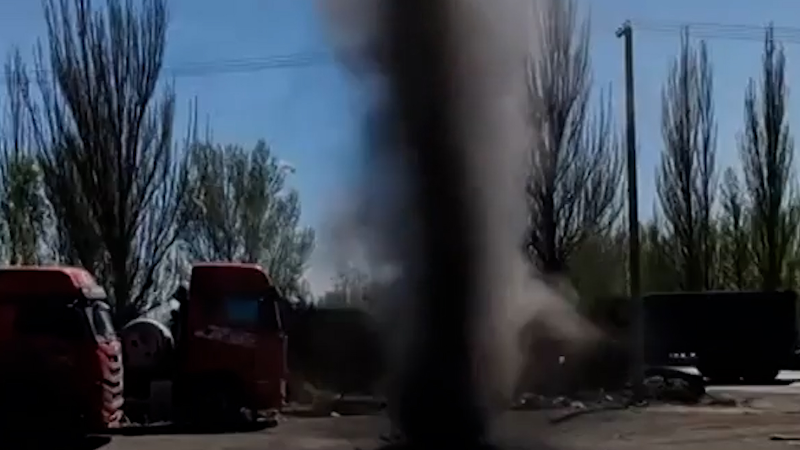
Watch as a powerful, nearly 100-foot high dust devil forms

How to recognize a 'radar-confirmed tornado'
Top Stories
Trending Today
Accuweather early, accuweather prime, forecast victories.
Dangerous US severe weather outbreak to peak on Friday, Saturday
25 minutes ago

Dust storm turns sky apocalyptic orange, red over Greece, Libya

Winter Weather
Protect your plants: Nighttime freezes to chill Northeast into Friday
3 hours ago

This map may save lives when there's a tornado threat

Weather Forecasts
Warmth to surge over much of Northeast; 1st 90s F in some areas
35 minutes ago

Featured Stories
10 types of tornadoes that occur in the US

Intense rain causes massive flooding in southern China

Springtime magic: Pink Moon blooms brightly in April sky
7 hours ago

Nearly 40% of people in the US live with unhealthy air pollution
5 hours ago

Hiking to the world's tallest tree could land you in jail

We have updated our Privacy Policy and Cookie Policy .
Get AccuWeather alerts as they happen with our browser notifications.
Notifications Enabled
Thanks! We’ll keep you informed.
- GOOD DIRECTORY
- --> -->

- Personal Growth
- Spirituality
- Love & Relationships
- Environment
- Wildlife & Animals
- Sustainability
- Organizations
- Volunteering
- Crowdfunding
- Good Deeds Day
- Good Gallery
- Infographics
- Good Directory
- WILDLIFE & ANIMALS
Amazing Footage of a Humpback Whale Birth Released
Witness the miracle of life..
The ocean is an incredible, mysterious zone. Its vast, sapphire expanse conceals an otherworldly realm filmed with millions of creatures each with their own families and life cycles. Now, the world has a new glimpse into the lives of the ocean dwellers. The NY Post reports, that National Geographic recently shared a video of the first ever humpback whale birth to be caught on camera.
Incredible animal journeys The footage comes from off the coast of Lahaina, a Hawaiian island that is a popular spot for humpback whales to give birth thanks to its warm waters that are relatively free of predators. The birth took place on March 5, 2021 just after sunset.
Rachel Cartwright, a Maui-based whale researcher explained to the New York Post how her team discovered the birth. They were underwater to film a pod of male humpbacks, when they noticed a small fluke emerging from one of the females in the area.“At that point, we knew we had a possible birth,” Cartwright explained.
The research team dropped a drone into the water to capture the footage. “What we saw on the footage is a big burst of blood come out,” Cartwright shared. “And then, two seconds later, we finally saw a calf.”
Cartwright also shares that she was surprised by the presence of the males who seemed to be supporting the birthing mother. “There’s one beautiful sequence where the mom has got her tail up, and the little baby’s tail is sticking out, and the males go underneath blowing bubbles,” explained Cartwright, adding that humpback whales produce oxytocin in response to humpback bubbles moving across their skins, so, in a way, it was like the male whales were massaging the birthing female.
The footage ends with the baby emerging and nuzzling up to his mother who pushes him to the surface for his first breath. “We’ve been waiting for this for 25 years,” says Cartwright. “It’s never been seen.”
National Geographic released a small clip of the never-before seen, two-year-old footage as a teaser for their new series “Incredible Animal Journeys,” where they promise to release the entire video of the birth.
Sperm whale baby National Geographic’s footage is significant because it’s the first humpback birth caught in its entirety. But there have been other whale births also captured on camera.
National Geographic shares the story of Shane Gero whose research team filmed a sperm whale birth this past July. “I have been doing this for almost 20 years,” Gero told National Geographic. “Maybe if I do it for 20 more, there will be another day like this… it was pretty awe-inspiring.”
The team was following Rounder, a female sperm whale that they’d been in contact with since she was a calf, when they came across 11 sperm whales grouped in rows. In contrast to their usual hustle and bustle, this pod was extremely quiet and still.
As Gero’s drone recorded, they watched the little sperm whale emerge from Rounder. After the birth, the whales started making noise again, and as a group pushed the calf to the surface to take its first breath. They also supported the little sperm whale since its fluke had been compressed during the birth so the baby couldn’t yet swim on its own.
Gero explained, “When she comes out her fluke is like, all floppy, like, the cartilage in the musculature isn't there the whole body just seemed limp.”
Reflecting on the birth, Gero added that, “Moments like this sort of allow you to sort of take stock and realize what an honor it is to do the work that we get to do, and how much I do care about the whales that I work with.”
YOU MIGHT ALSO LIKE: Humpback Whales Population Rebound is a Success Story All About a Kind Whale Who Came Back to Visit Hauntingly Beautiful Whale Song is Used for Exploring

Most Read Now:

7 Surprising Banana Peel Uses

This New Guinea Dog is Singing a New Tune

11-Year-Old Nigerian Boy Leaps to Fame

GOOD FOR you!
Thank you for signing up. Expect to hear from us very soon.

Incredible Animal Journeys
Latest clips.

You May Also Like

An Amazing Journey From Intern to Zoologist
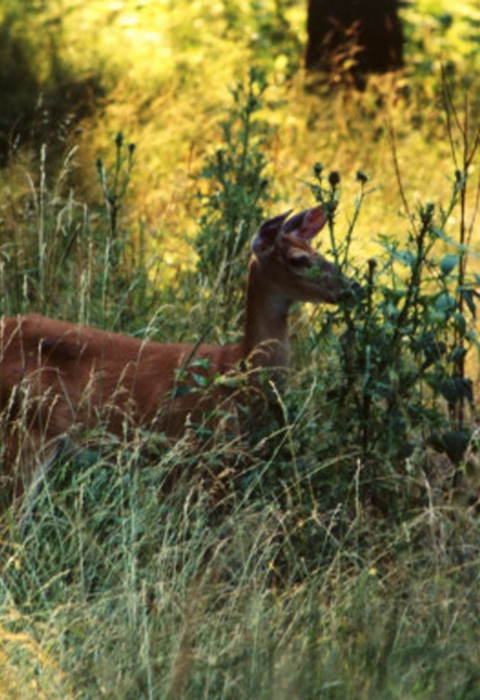
In fall 2021, a Bowie State University biology student, Muhannad Alghamdi, attended a presentation given by the Service’s Ela Carpenter about urban wildlife biology through his Field Biology class. He and his classmates learned how to set up trail cameras to monitor wildlife at Patuxent Research Refuge. His interest in wildlife management continued to grow. In January 2022, Muhannad participated in the first public mammals inventory program at Masonville Cove Urban Wildlife Refuge Partnership in Baltimore, Maryland.

That summer, Muhannad entered into the Masonville Cove Partnership's Urban Conservation and Education Internship (UCEI). The six-week program provides interns with opportunities to explore environmental careers; network with mentors in the environmental and conservation sectors; assist with outdoor environmental education programs; and engage in outdoor community programming and wildlife conservation and monitoring.
During his internship, Muhannad worked with members of the Masonville Cove Partnership, including Service biologists with the Chesapeake Bay Field Office and Patuxent Research Refuge and the Living Classrooms Foundation. Part of his UCEI experience included assisting with the summer outdoor education program for children at Masonville Cove, the free fishing program for underserved communities, and numerous wildlife field trips.
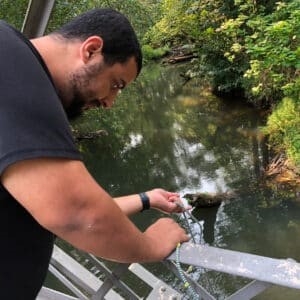
Now, two years later, Muhannad is a zoologist at a nature reserve in Saudi Arabia. One of his first projects is an intensive 200-to-300 trail camera survey to monitor a variety of wildlife, from carnivores to herbivores.
“Working as an intern in the Urban Conservation and Education program opened my eyes to different fields within environmental science,” said Muhannad. “It helped me have a deeper understanding of the environment and guided me to find my path through all the people that I met through the internship. I met a lot of experts working in urban conservation, and all of them had amazing insights on the work and nature. That made me search more about majors in the environment field, and I found zoology.”
Muhannad recently reached back out to urban biologist Ela Carpenter to discuss techniques for utilizing trail cameras as well as ways to engage local hunters and farmers near the reserve.
Other Story Credits
Latest stories.
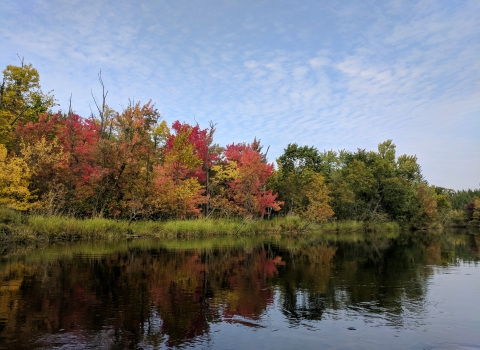
You are exiting the U.S. Fish and Wildlife Service website
You are being directed to
We do not guarantee that the websites we link to comply with Section 508 (Accessibility Requirements) of the Rehabilitation Act. Links also do not constitute endorsement, recommendation, or favoring by the U.S. Fish and Wildlife Service.
- Skip to primary navigation
- Skip to main content
- Skip to primary sidebar
- Skip to footer
TravelAwaits
Our mission is to serve the 50+ traveler who's ready to cross a few items off their bucket list.
19 Unique And Fabulous Experiences In Moscow

- Destinations
Thinking of visiting Russia? When visiting such a famous city, one must, of course, visit the iconic landmarks first. Moscow has plenty of those, most of them in the center of the city, which is very well-planned for tourists. Once you’ve seen the sights that are on most travelers’ lists, it’s time to branch out and visit some of the lesser-known sites, and there are some fascinating places to see and things to do.
I know this list is long, but I just couldn’t help myself. You probably won’t have the time to see them all. But that’s okay. Just scroll through the list and choose what sounds the most interesting to you. Where possible, make sure to book in advance, as things can get crowded, especially during high season.

1. The Red Square, Kremlin, And Surroundings
Red Square (Krasnya Ploshad) is the heart and soul of Russia, and where much of the country’s history has unfolded. This is the most famous landmark in Moscow and indeed the whole country, it’s an absolute must-do! The square is always full of people and has a rather festive atmosphere!
Saint Basil’s Cathedral
This is the famous church with the rainbow-colored, onion-domed roof. The cathedral was commissioned in the 1500s by Ivan the Terrible and according to legend, the Tsar thought it was so beautiful, that he ordered that the architect’s eyes be cut out afterward, so he could never build anything more beautiful! He wasn’t called Ivan the Terrible for no reason!
Lenin’s Mausoleum
The “love-it-or-hate-it” of tourist attractions in Russia. A glass sarcophagus containing the embalmed body of Russian revolutionary, Vladimir Lenin. It may seem a bit bizarre to display the mummy of a person, but it has been there for almost half a century and the 2.5 million visitors who come each year, clearly feel the queuing and thorough body search are worth it, to be in Lenin’s presence.
Pro Tip: no photos and no loud talking are allowed inside the Mausoleum.
Eternal Flame
There is an Eternal Flame in honor of an unknown soldier on the left side of Red Square. The hourly changing of the guards is worth seeing.
The Kremlin is the official residence of the Russian president. You can see it from the outside, or you can take an excursion to one of the museums located inside. This is the biggest active fortress in Europe, and holds a week’s worth of attractions! Once behind the 7,332-feet of walls, there are five squares, four cathedrals, 20 towers, various museums, and the world’s largest bell and cannon to see. Worth a special mention is the Armory Chamber that houses a collection of the famous Faberge Eggs.
Pro Tip: You can only go inside the Kremlin if you are part of a tourist group.

2. Bolshoi Theatre
Bolshoi Theatre translates to “The Big Theatre” in Russian, and the building is home to both the Bolshoi Ballet and Bolshoi Opera — among the oldest and most famous ballet and opera companies in the world.
Pro Tip: It’s hard to get an inexpensive ticket, so if you’re reading well in advance of going to Moscow then try buying tickets on the official website . Last-minute tickets cost around $250 per person. If this is out of your budget, about an hour before a performance, you can try buying a ticket at the entrance from a reseller. Most can speak enough English to negotiate the price.
Tour the Bolshoi Theatre: You can take a group guided tour of the Bolshoi Theatre which focuses on the history and architecture of the theatre and behind the scenes. There’s an English language tour that lasts 2 hours and costs around $300 for a group of up to six.

3. Luxury Shopping At GUM And TSUM
Russia’s main department store, GUM, has a stunning interior that is home to over 100 high-end boutiques, selling a variety of brands: from luxurious Dior to the more affordable Zara. Even if shopping is not on your Moscow to-do list GUM is still worth a visit; the glass-roofed arcade faces Red Square and offers a variety of classy eateries. TSUM, one of the biggest luxury malls in town, is right behind the Bolshoi and GUM. It’s an imposing building with lots of history, and worth a visit just for its design and its glass roof.

4. Christ The Savior Cathedral
This is one of Russia’s most visited cathedrals and is a newer addition to the gorgeous array of Muscovite cathedrals, but don’t let its young age fool you. After perestroika, in the early 90s, the revived Russian Orthodox Church was given permission to build a cathedral on this site. It did the location honors and built the largest temple of the Christian Orthodox Church. The façade is as grand as you’d expect, but it’s the inside that will mesmerize you, with its domes, gold, gorgeous paintings, and decor!
The cathedral is located just a few hundred feet away from the Kremlin and was the site of the infamous Pussy Riot protest against Putin back in 2012.
Pro Tip: Bring a shawl to cover your hair as is the local custom.

5. Gorky Park
Moscow’s premier green space, Gorky Park (Park Gor’kogo) is the city’s biggest and most famous park. There is entertainment on offer here for every taste, from outdoor dancing sessions to yoga classes, volleyball, ping-pong, rollerblading, and bike and boat rental in summer. In winter, half the park turns into a huge ice skating rink. Gorky Park is also home to an open-air movie theater and the Garage Museum of Contemporary Art. There is also Muzeon Art Park, a dynamic contemporary space with a unique collection of 700 sculptures. It is located right in front of Gorky Park.
6. Sparrow Hills Park
If you take a walk from Gorky Park, along the Moscow River embankment, you’ll end up in the city’s other legendary park, Sparrow Hills. Although the park doesn’t offer as many activities as its hip neighbor, it has a great panoramic view of the city
Pro Tip: You can take a free walking tour to all of the above attractions with an English-speaking guide.

7. River Cruising
One of the best ways to experience Moscow, and see all the famous landmarks, but from a different angle, is from the Moscow River. Take a river cruise. Avoid the tourist crowds. There are little nameless old boats that do the cruise, but if you are looking for a more luxurious experience take the Radisson Blu cruise and enjoy the sights with some good food and a glass of wine.

8. Metro Hopping
Inaugurated in the 1930s, the Moscow Metro system is one of the oldest and most beautiful in the world. Started in Stalinist times, each station is a work of art in its own right. I’d recommend touring the stations between 11 a.m. and 4 p.m. This way, you’ll be able to properly see it without the crowds. Ideally, I’d recommend taking a tour with a knowledgeable guide with GuruWalk, who will tell you stories of forgotten stations and how the history of the country is interconnected with the metro development. If going by yourself, then I definitely recommend checking out: Mayakovskaya, Ploschad Revolutsii, Kievskaya, Kropotkinskaya, Kurskaya, and Novoslobodskaya stations.
Visit the free Moscow Metro Museum: For real train enthusiasts, located in the southern vestibule of Sportivnaya station is a small free museum. Here you can take a peek into the driver’s cabin, see a collection of metro tokens from different cities, and see different models of a turnstile, traffic lights, escalator, and more.

9. Moscow State University View
In his effort to create a grander Moscow, Stalin had seven skyscrapers built in different parts of town; they’re called the Seven Sisters. The largest of these buildings and the one with the best view is the main building of the Moscow State University. Although this is a little outside the city center, the view is more than worth it.

10. Izmailovsky Market
Mostly known for the city’s largest flea market, the district of Izmaylovo is home to a maze of shops where you can get just about anything, from artisan crafts to traditional fur hats, handcrafted jewelry, fascinating Soviet memorabilia, and antiquities. It’s also one of Moscow’s largest green spaces. There are often no price tags, so be prepared to haggle a bit. Head to one of the market cafes for a warming mulled wine before continuing your shopping spree.
The History of Vodka Museum is found here, and the museum’s restaurant is the perfect place to sample various brands of the national drink.
Once you’ve covered the more touristy spots, Moscow still has plenty to offer, and the places below will also be full of locals! So for some local vibes, I would strongly recommend the spots below!

11. Moscow City
With a completely different vibe, Moscow City (also referred to as Moscow International Business Center) is like a mini Dubai, with lots of impressive tall glass buildings. Here is where you’ll find the best rooftops in towns, like Ruski Restaurant, the highest restaurant both in Moscow City and in Europe. Moscow City is great for crowd-free shopping and the best panoramic views of the city.

12. Tretyakov Gallery
Tretyakov Gallery started as the private collection of the Tretyakov brothers, who were 19th-century philanthropists. They gave their private collection to the government after their deaths. If there is just one museum you visit in Moscow, I recommend this one!

13. Tsaritsyno Museum-Reserve
Tsaritsyno was a residence of Catherine the Great more than two centuries ago. It became derelict during the Soviet era but has now been fully renovated. With its opulently decorated buildings, gardens, meadows, and forests, Tsaritsyno Park is the perfect place for a green respite in Moscow.

14. Kolomenskoye
A 10-minute metro ride from the city center is Kolomenskoe Museum-Reserve, where you can get an idea of what Russia looked like 200 years ago. You’ll find ancient churches (one dating back to the 16th century), the oldest garden in Moscow, and the wonderful fairytale wooden palace of Tsar Alexey Mikhailovich, father of Peter the Great.

15. Ostankino TV Tower
Built in 1967, Ostankino TV Tower was the tallest free-standing construction in the world at the time, it’s still the 8th tallest building in the world and the highest in Europe. It’s also the best observation deck, with a glass floor and 360-degree views. The speedy elevators take you 1,105 feet in next to no time.
Pro Tip: You need to book in advance; entrance is based on specific ticket times and the capacity is limited and only a certain number of tourists are allowed per day. Don’t forget your passport, you’ll need it to get through security.

16. Zaryadye Park
Zaryadye is a newly opened, landscaped urban park so new you won’t find it in a lot of tour guides. The park is near Red Square and is divided into four climatic zones: forest, steppe, tundra, and floodplains, depicting the variety of climatic zones in Russia.
These last three suggestions are a little quirky, but all are really worth checking out.
17. Museum Of Soviet Arcade Games
Release your inner child playing on 66 arcade machines from the Soviet era! What a great way to spend a couple of hours when tired of visiting museums and palaces. The staff speaks excellent English and are happy to explain how the games work.

18. Moscow Rooftop Tour
Take a 1-hour private Moscow rooftop tour with an experienced roofer. I can just about guarantee none of your friends will be able to say they’ve done it! For your comfort, I recommend wearing comfortable shoes. Take your camera, there are some amazing photo opportunities out there!

19. Sanduny Banya
This classical Russian bathhouse opened its doors in 1808 and is famous for combining traditional Russian banya services with luxurious interiors and service. If you enjoy spas and saunas, then you should experience a Russian bathhouse at least once in your life! Go with an open mind and hire a specialist to steam you as it’s meant to be done — by being beaten repeatedly with a besom (a leafy branch)! This is said to improve circulation, but is best done by a professional!
So there you have my list of things to do in Moscow. I could have gone on and on and on, but I didn’t want to try your patience! There are so many things to do in this vibrant city that you’ll definitely need to allocate several days for exploring.
Here are some other reasons to visit Moscow and Russia:
- 7 Reasons To Put Moscow On Your Travel Bucket List
- Russia 30 Years (And 30 Pounds) Ago
- Massive Mysterious Craters Appearing Again In Siberia

Born and raised in Sydney, Australia, before moving to Africa at the age of 21, Sarah Kingdom is a mountain climber and guide, traveler, yoga teacher, trail runner, and mother of two. When she is not climbing or traveling she lives on a cattle ranch in central Zambia. She guides and runs trips regularly in India, Nepal, Tibet, Russia, and Ethiopia, taking climbers up Tanzania’s Mount Kilimanjaro numerous times a year.
More From Forbes
8 dazzling photos that peek inside the world of nocturnal insects.
- Share to Facebook
- Share to Twitter
- Share to Linkedin
If you’ve ever noticed the buzz, chirps and rustles intensifying around your campsite at dusk, ... [+] you’re onto something. But the real story behind insect activity is more nuanced than you might think.
Insects are pivotal to ecosystem health, serving crucial roles from pollination to being a food source for other wildlife. It’s often said that if all insects were to disappear, ecosystems worldwide would collapse. This is why understanding their behavior and activity patterns is vital.
Anecdotally, it’s long been observed that insects seem to become more active as daylight fades. However, it was only recently that a comprehensive meta-analysis , examining nearly 400 global observations from 99 studies, scientifically confirmed what many have suspected: insects are indeed more active at night. More importantly, this activity peak varies significantly depending on the insects’ habitats.
The study revealed that aquatic insects are predominantly active during the night, whereas their terrestrial counterparts show a stronger preference for daytime. This distinction underscores the complexity of insect behavior and highlights the importance of habitat in determining their daily activity patterns.
The Sheer Numbers Only Provide Part of The Picture
Just as how terrestrial species globally outnumber aquatic species, terrestrial insects also exceed aquatic insects in terms of diversity. However, this doesn’t directly translate to higher visible activity during the day.
Even though there are fewer species of nocturnal insects, especially those in aquatic environments, their level of activity at night can be much higher compared to that of terrestrial insects during the day. This higher activity at night in water-based habitats may be an evolutionary adaptation to avoid predators that are active during daylight hours, such as fish.
Huawei s Pura 70 Ultra Beats iPhone With Pioneering New Feature
The juan soto trade has helped both the yankees and the san diego padres, four reportedly hurt after army horses run loose through central london, a visual journey through insect activity.
During the night, aquatic environments come alive with the activities of mayflies, caddisflies, moths and earwigs.
Mayflies are distributed all over the world in clean freshwater habitats.
A close up of a caddisfly on a leaf. Habitats can include streams, both cool and warm, lakes, ... [+] marshes and ponds.
This is a lappet moth. Adult moths of this family are usually seen around electric lights at night, ... [+] or in the morning resting near where a light had shown all night.
Earwigs hide in moist crevices by day and become active at night, feeding on a variety of insects ... [+] and plants.
These species thrive in the cover of darkness, which offers protection from many of their daytime predators. Mayflies and caddisflies, often found near streams and rivers, are particularly active at night when they perform their mating dances and egg-laying rituals without the threat of fish. Moths, attracted to minimal light, navigate the night with incredible sensory adaptations, while earwigs scuttle through the undergrowth, feeding on a variety of plant and animal matter.
In the daylight , it’s the terrestrial insects like thrips, bees, wasps and ants that dominate the scene.
Thrips inhabit a range of locations including under leaves, inside flower blossoms, within leaf ... [+] whorls and axils, beneath bark, among mosses and leaf litter, as well as within soil, on fungi, and on fruits and flower bulbs.
Bees are social creatures and live on hives and nests. They are commonly found in gardens, meadows ... [+] and woodlands.
Wasps, including yellowjackets, are known to attack bee colonies. They can prey on the bees ... [+] themselves, their larvae, or even raid the hives to steal honey. This predatory behavior is part of their natural instinct to find protein sources for their developing larvae and to secure energy-rich food like honey.
A close up of a red carpenter ant. This terrestrial insects earns its name due to its ability to ... [+] excavate wood in order to build its nests.
Thrips, tiny and often overlooked, feed on plant cells primarily during the day when they can best avoid nocturnal predators. Bees and wasps are busy pollinators and predators, respectively, their activities centered around the availability of floral resources and prey that are active during the day. Ants , with their complex social structures, perform tasks like foraging and building, which are best suited to daylight hours for maximum efficiency and safety from nocturnal predators.
Does Temperature Play A Role In Making Insects Nocturnal?
Insects, as ectotherms, rely on external sources to regulate their body temperatures. This dependency plays a critical role in their daily activity patterns.
In warmer, tropical regions, the night offers a respite from the scorching daytime temperatures. Here, nocturnal activity is not just a behavior adapted to evade predators but also a necessary strategy to avoid the extreme heat that can be lethal for many insects. Nocturnal insects in these areas are more active after dark, possibly to conserve energy and maintain optimal body function that would be compromised by daytime temperatures.
However, in cooler, temperate regions, where daytime temperatures are more moderate, insects might not need to avoid the heat to the same extent. Here, diurnal insects (those that are more active during the day) can thrive, engaging in activities like pollination and foraging without the thermal stress encountered by their tropical counterparts.
Moreover, global warming poses a significant threat to these finely tuned behaviors. As temperatures worldwide continue to rise, the thermal environments that many insects have adapted to are changing. This shift could alter the current patterns of nocturnal and diurnal activity. For nocturnal insects, particularly in tropical regions, warmer nights might reduce the recuperative effect of cooler temperatures, potentially leading to decreased activity and challenges in survival and reproduction.
Understanding these temperature-driven dynamics is crucial for predicting how insect populations will adapt to our changing climate. It also underscores the importance of integrating temperature considerations into conservation strategies to ensure the survival of these vital creatures, whose activities are foundational to the health of ecosystems globally.

- Editorial Standards
- Reprints & Permissions
- Share full article
For more audio journalism and storytelling, download New York Times Audio , a new iOS app available for news subscribers.

- April 25, 2024 • 40:33 The Crackdown on Student Protesters
- April 24, 2024 • 32:18 Is $60 Billion Enough to Save Ukraine?
- April 23, 2024 • 30:30 A Salacious Conspiracy or Just 34 Pieces of Paper?
- April 22, 2024 • 24:30 The Evolving Danger of the New Bird Flu
- April 19, 2024 • 30:42 The Supreme Court Takes Up Homelessness
- April 18, 2024 • 30:07 The Opening Days of Trump’s First Criminal Trial
- April 17, 2024 • 24:52 Are ‘Forever Chemicals’ a Forever Problem?
- April 16, 2024 • 29:29 A.I.’s Original Sin
- April 15, 2024 • 24:07 Iran’s Unprecedented Attack on Israel
- April 14, 2024 • 46:17 The Sunday Read: ‘What I Saw Working at The National Enquirer During Donald Trump’s Rise’
- April 12, 2024 • 34:23 How One Family Lost $900,000 in a Timeshare Scam
- April 11, 2024 • 28:39 The Staggering Success of Trump’s Trial Delay Tactics
The Crackdown on Student Protesters
Columbia university is at the center of a growing showdown over the war in gaza and the limits of free speech..
Hosted by Michael Barbaro
Featuring Nicholas Fandos
Produced by Sydney Harper , Asthaa Chaturvedi , Olivia Natt , Nina Feldman and Summer Thomad
With Michael Simon Johnson
Edited by Devon Taylor and Lisa Chow
Original music by Marion Lozano and Dan Powell
Engineered by Chris Wood
Listen and follow The Daily Apple Podcasts | Spotify | Amazon Music
Columbia University has become the epicenter of a growing showdown between student protesters, college administrators and Congress over the war in Gaza and the limits of free speech.
Nicholas Fandos, who covers New York politics and government for The Times, walks us through the intense week at the university. And Isabella Ramírez, the editor in chief of Columbia’s undergraduate newspaper, explains what it has all looked like to a student on campus.
On today’s episode
Nicholas Fandos , who covers New York politics and government for The New York Times
Isabella Ramírez , editor in chief of The Columbia Daily Spectator

Background reading
Inside the week that shook Columbia University .
The protests at the university continued after more than 100 arrests.
There are a lot of ways to listen to The Daily. Here’s how.
We aim to make transcripts available the next workday after an episode’s publication. You can find them at the top of the page.
Research help by Susan Lee .
The Daily is made by Rachel Quester, Lynsea Garrison, Clare Toeniskoetter, Paige Cowett, Michael Simon Johnson, Brad Fisher, Chris Wood, Jessica Cheung, Stella Tan, Alexandra Leigh Young, Lisa Chow, Eric Krupke, Marc Georges, Luke Vander Ploeg, M.J. Davis Lin, Dan Powell, Sydney Harper, Mike Benoist, Liz O. Baylen, Asthaa Chaturvedi, Rachelle Bonja, Diana Nguyen, Marion Lozano, Corey Schreppel, Rob Szypko, Elisheba Ittoop, Mooj Zadie, Patricia Willens, Rowan Niemisto, Jody Becker, Rikki Novetsky, John Ketchum, Nina Feldman, Will Reid, Carlos Prieto, Ben Calhoun, Susan Lee, Lexie Diao, Mary Wilson, Alex Stern, Dan Farrell, Sophia Lanman, Shannon Lin, Diane Wong, Devon Taylor, Alyssa Moxley, Summer Thomad, Olivia Natt, Daniel Ramirez and Brendan Klinkenberg.
Our theme music is by Jim Brunberg and Ben Landsverk of Wonderly. Special thanks to Sam Dolnick, Paula Szuchman, Lisa Tobin, Larissa Anderson, Julia Simon, Sofia Milan, Mahima Chablani, Elizabeth Davis-Moorer, Jeffrey Miranda, Renan Borelli, Maddy Masiello, Isabella Anderson and Nina Lassam.
Nicholas Fandos is a Times reporter covering New York politics and government. More about Nicholas Fandos
Advertisement
2018 Primetime Emmy & James Beard Award Winner
R&K Insider
Join our newsletter to get exclusives on where our correspondents travel, what they eat, where they stay. Free to sign up.
A History of Moscow in 13 Dishes
Featured city guides.
- Mobile Site
- Staff Directory
- Advertise with Ars
Filter by topic
- Biz & IT
- Gaming & Culture
Front page layout
Anyway you want it —
The fall guy spotlights its amazing stuntmen in meta marketing video, ryan gosling and his stunt buddies spoof carpool karaoke and sing along to journey..
Jennifer Ouellette - Apr 24, 2024 4:49 pm UTC
Universal Studios has been going meta with its marketing for its forthcoming action comedy The Fall Guy . Ryan Gosling and Emily Blunt are the marquee stars; Gosling plays a Hollywood stuntman trying to make a movie with his estranged ex-girlfriend (Blunt). But it's the actual stuntmen standing in for Gosling during action sequences who get the spotlight in a new promotional video for the film.
As previously reported , The Fall Guy is directed by David Leitch, who also brought us the glorious John Wick (his uncredited directorial debut with Chad Stahelski ). It's a loose adaptation of the popular 1980s TV series of the same name starring Lee Majors. Per the official synopsis:
Oscar nominee Ryan Gosling stars as Colt Seavers, a battle-scarred stuntman who, having left the business a year earlier to focus on both his physical and mental health, is drafted back into service when the star of a mega-budget studio movie—being directed by his ex, Jody Moreno, played by Golden Globe winner Emily Blunt—goes missing. While the film’s ruthless producer (Hannah Waddingham), maneuvers to keep the disappearance of star Tom Ryder (Aaron Taylor-Johnson) a secret from the studio and the media, Colt performs the film’s most outrageous stunts while trying (with limited success) to charm his way back into Jody’s good graces. But as the mystery around the missing star deepens, Colt will find himself ensnared in a sinister, criminal plot that will push him to the edge of a fall more dangerous than any stunt.
In this incarnation, Gosling's Colt Seavers isn't a bounty hunter on the side; he's just a stuntman—a bit past his prime—who stumbles into solving a mystery. Blunt costars as Jody Moreno, Colt's ex-girlfriend and a former camera operator who finally gets the chance to direct her first film. Aaron Taylor-Johnson plays movie star Tom Ryder, who goes missing mid-shoot. Stephanie Hsu plays Ryder's personal assistant, and Winston Duke plays Colt's stunt coordinator and BFF. Ted Lasso 's Hannah Waddingham appears as Gail, the producer of Jody's film. And OG Fall Guy Lee Majors (now in his 80s) is expected to have a cameo; perhaps he'll perform the theme song, "Unknown Stuntman," that he wrote and recorded for the original series.
Last week, the studio released three short promotional videos in which Gosling, Blunt, Leitch, and Waddingham try to come up with creative marketing ploys for the film. But today's release, "Car Pool," is the best of the lot, precisely because it pays clever homage to the actual stuntmen.
Further Reading
The video opens with Gosling getting a call from Leitch, instructing him to pick up his three stunt doubles in a flashy lime green Nissan GT-R. (Per Ars Automotive Editor Jonathan Gitlin, it's the R35 generation, on sale since 2007.) The concept is meant to evoke a carpool karaoke vibe, only without the actual music (no, not even Journey).
Of course, Gosling can't resist blasting Journey's "Any Way You Want It" en route to the various pickup points. And, of course, the stuntmen—Logan Holladay, Ben Jenkin, and Troy Brown—can't resist showcasing their stuntman skills. Halladay takes over driving duties, Jenkin stages getting hit by the car and rolling onto the hood, and Troy falls off a roof onto an inflatable stunt bag. They all have a grand time singing along to Journey, and Jenkin actually has a decent voice. If only they can make sure they get the song rights....
The Fall Guy hits theaters on May 3, 2024.
Listing image by Universal Pictures
reader comments
Channel ars technica.

IMAGES
VIDEO
COMMENTS
Let's read Journeys 1st Grade Lesson 20 Amazing Whales book. We will learn new facts about all different kinds of whales.
Killer Whales - The Amazing Journey of a Young Orca | Ocean DocumentaryWatch 'Ocean Stories - The Full Series' here: https://youtu.be/M2Eka0RA7RwDuring four ...
Brand new with free tracking and delivery confirmation and a FREE GIFT. Thank you and God Blesss! Publisher : HOUGHTON MIFFLIN HARCOURT; 1st edition (December 7, 2012) Language : . Paperback : . ISBN-10 : . 1.92 ounces. 5.0 out of 5 stars. Brief content visible, double tap to read full content.
Whales and Human-Related Activities Overlap in African Waters. * Quoted from the inside cover of Amazing Whales! This feature is a guide to using informational read-aloud text, "Amazing Whales!" by Sarah L. Thomson. It introduces this species to young naturalists in the primary grades K-1, who are mastering reading skills.
A humpback whale, part of the rorqual family of whales, swims in the ocean. (Image credit: NOAA) Humpback whales hold the world's record for longest mammalian voyage. One population spends the ...
With a barrel-shaped body and pectoral fins protruding like oversized wings, the humpback whale is not designed for speed. Yet the marine mammal, which can reach lengths of 50 feet, is known for its impressively long travels between warm-water breeding grounds in the winter and cold-water feeding grounds during the summer. "Humpbacks arguably make the longest documented migration of any ...
These are powerpoints for each story in unit 4 of Journeys and a review with Amazing Whales. The lessons include a morning message/activity, phonemic and phonic lessons, reading comprehension lessons. The powerpoints also include small group discussion prompts with rigor questions, smart board activities and optional lessons if you don't have a ...
When Whales Walked: Journeys in Deep Time 2x54, 1x114, 1x85. When Whales Walked: Journeys in Deep Time. They are the most iconic animals on Earth—whales and birds of prey, ferocious crocodiles and magnificent elephants. To see them is to marvel—and to ask a surprisingly challenging question: Where did these amazing creatures come from?
Season 1 Episode 1 | 2m 10s. Discover the evolutionary secrets of some of the world's most majestic creatures. From voracious crocodiles and acrobatic birds to stupendous whales and majestic elephants, WHEN WHALES WALKED follows top scientists on a global adventure as they follow clues from the fossil record and change what we thought we knew ...
That's the charming and beautiful trick of Nat Geo 's new seven-part series " Incredible Animal Journeys ," premiering November 19. Narrated by Jeremy Renner, each episode follows a wide ...
When Whales Walked: Journeys in Deep Time. Join top scientists on a global adventure to uncover the amazing origin stories of intriguing animals, from crocodiles and birds to whales and elephants. When Whales Walked changes what we think about the evolution of iconic beasts.
More than 100 pilot whales are stranded in Western Australia, experts say. An official said 26 of the whales had died and that "these events usually result in the beached animals having to be ...
CNN —. A dramatic operation to save the lives of more than 100 pilot whales ended in partial success on Thursday after wildlife officials managed to return most of the stranded animals to sea ...
The more you see how amazing these animals are, the incredible journeys that they make and they navigate from using the sun, moon, and stars, the more you want to protect their world. If we can protect these animals, then we can protect our planet. National Geographic's "Incredible Animal Journeys" premieres this Sunday, November 19.
When Whales Walked: Journeys in Deep Time They are the most iconic animals on Planet Earth - voracious crocodiles, acrobatic birds, majestic elephants, stupendous whales. To see them is to marvel - and to ask a surprisingly challenging question: Where did these amazing creatures come from? Traveling millions of years into the past, we unravel these iconic creatures' lineage - a story full of ...
Nov 27, 2023. Jeremy Gray. A humpback mother and calf swim through Hawaii's clear blue waters. (National Geographic for Disney/Kim Jeffries) National Geographic's new television series ...
(CNN) — A dramatic operation to save the lives of more than 100 pilot whales ended in partial success on Thursday after wildlife officials managed to return most of the stranded animals to sea.
Incredible animal journeys. The footage comes from off the coast of Lahaina, a Hawaiian island that is a popular spot for humpback whales to give birth thanks to its warm waters that are relatively free of predators. The birth took place on March 5, 2021 just after sunset. Rachel Cartwright, a Maui-based whale researcher explained to the New ...
01:00. Incredible Animal Journey :60 10.24.2023. Your Favorite National Geographic Series and Films Streaming Anytime on Disney+. START STREAMING NOW. Watch full episodes of Incredible Animal ...
Now a new seven-episode series, National Geographic's Incredible Animal Journeys, crowns the end of 2023, premiering November 19 on National Geographic and debut-streaming November 20 on Disney+ ...
An Amazing Journey From Intern to Zoologist. Jan 14, 2024. Written By. Kathryn Reshetiloff. In fall 2021, a Bowie State University biology student, Muhannad Alghamdi, attended a presentation given by the Service's Ela Carpenter about urban wildlife biology through his Field Biology class. He and his classmates learned how to set up trail ...
Walking tour around Moscow-City.Thanks for watching!MY GEAR THAT I USEMinimalist Handheld SetupiPhone 11 128GB https://amzn.to/3zfqbboMic for Street https://...
Slaton, 37, slipped into something daring for the photo-op, rocking a black off-the-shoulder dress that showed off just how far the 1000-lb Sisters star has come. In the photo, shared to both ...
5. Gorky Park. Moscow's premier green space, Gorky Park (Park Gor'kogo) is the city's biggest and most famous park. There is entertainment on offer here for every taste, from outdoor dancing sessions to yoga classes, volleyball, ping-pong, rollerblading, and bike and boat rental in summer.
In the daylight, it's the terrestrial insects like thrips, bees, wasps and ants that dominate the scene. Thrips inhabit a range of locations including under leaves, inside flower blossoms ...
Just avoid rush hour. The Metro is stunning andprovides an unrivaled insight into the city's psyche, past and present, but it also happens to be the best way to get around. Moscow has Uber, and the Russian version called Yandex Taxi,butalso some nasty traffic. Metro trains come around every 90 seconds or so, at a more than 99 percent on-time ...
The Crackdown on Student Protesters. Columbia University is at the center of a growing showdown over the war in Gaza and the limits of free speech. April 25, 2024, 6:00 a.m. ET. Share full article ...
1: Off-kilter genius at Delicatessen: Brain pâté with kefir butter and young radishes served mezze-style, and the caviar and tartare pizza. Head for Food City. You might think that calling Food City (Фуд Сити), an agriculture depot on the outskirts of Moscow, a "city" would be some kind of hyperbole. It is not.
Ryan Gosling is a wise-cracking stuntman with a mission in The Fall Guy trailer. The video opens with Gosling getting a call from Leitch, instructing him to pick up his three stunt doubles in a ...